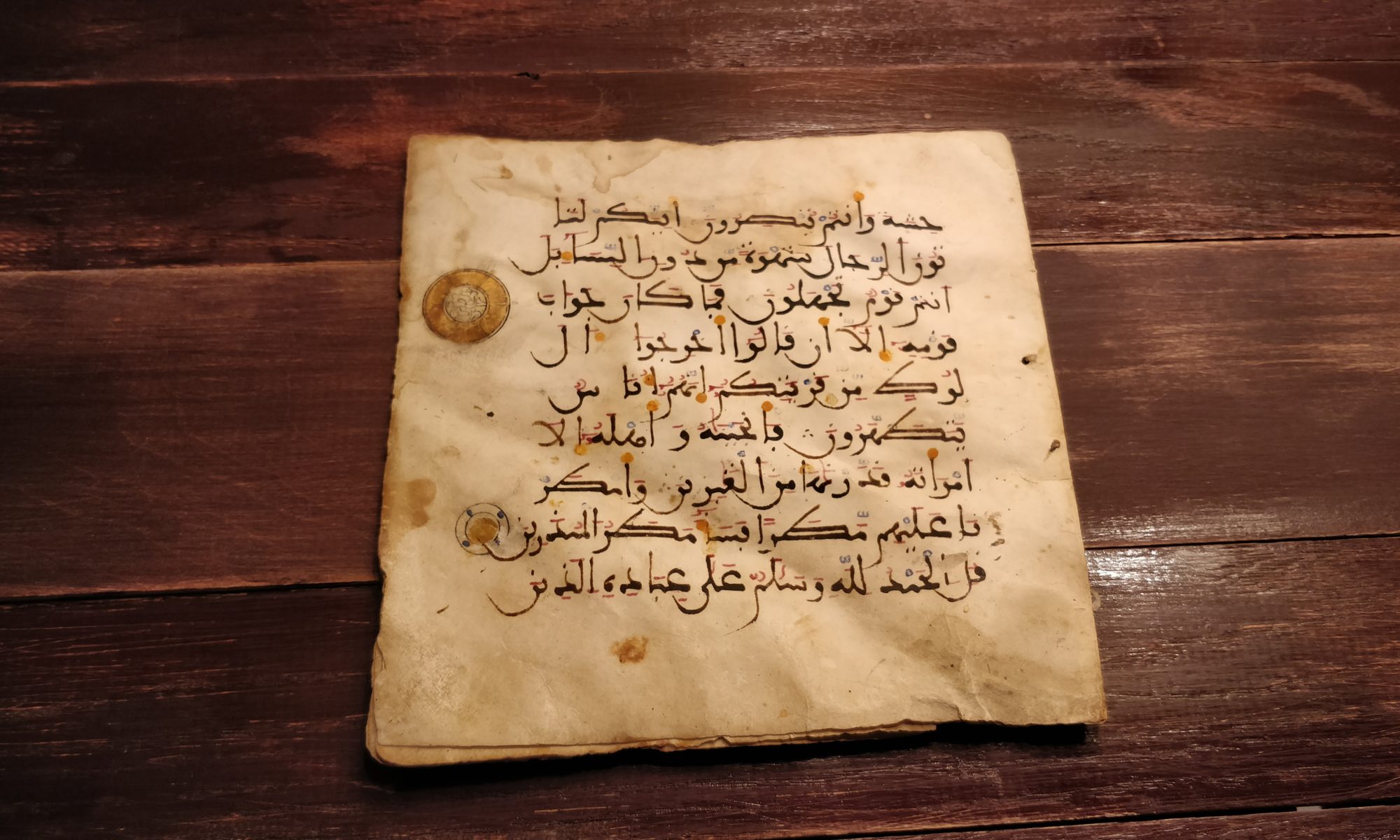Title: Ar-Rawdh Al-Unuf Sharh As-Seerah An-Nabawiyyah li-Ibn Hishaam (Vol.1) | الروض الأنف في شرح السيرة النبوية لابن هشام
Author: Abul Qaasim ‘Abdur-Rahman bin ‘Abdullah bin Ahmad As-Suhayli (D. 581H) | أبو القاسم عبد الرحمن بن عبد الله بن أحمد السهيلي
Scribe: Unknown | مجهول
Date: ~ 8th H/14th CE or 9th H/15th CE century (700H/1301 CE – 906H /1500 CE)
Script: Naskh
Size: 18.2 X 13.9 CM
Folios: 122ff.
Description: 15 Lines/page |”Oriental” Arabic laid paper, polished and glossed (with Arabic gum possibly) and light beige-white color. Laid lines are visible, but not throughout. Chain lines are sometimes apparent, rarely in groups- but there were two occurrences of grouped in 2 (or 3?).
Incipit: وَسَنَذْكُرُ سَبَبَ ذَلِكَ فِيمَا بَعْدُ (Starting a few pages into the beginning of work [ذِكْرُ سَرْدِ النّسَبِ الزّكِيّ مِنْ مُحَمّد]- Volume 1.
Explicit: وَإِنّمَا مَعْنَاهُ كَانَ يُقَالُ لَهُ أَيْ يُقَالُ (Until قِصّةُ عَمْرِو بْنِ لُحَيّ وَذِكْرُ أَصْنَامِ الْعَرَبِ – Volume 1)
Provenance: N/A
Research Notes: Based on research of existing dated manuscripts, this places the manuscript between the 12th to 15th centuries (CE). It’s likely, based on the chain line grouping, that it is between the 14th and 15th centuries (CE) in Egypt, Shaam, and Iraaq (Beit-Arie, 1996, pg. 11). The reference to Al-Baydawi (D. 685H/1286CE) indicates that it can be no earlier than the 13th century. The paper used also matches paper from that time period, possibly produced in Fustat, Egypt or Damascus, Syria. Paper-making in Syria and Egypt started in the 10th Century (CE) and was widely spread in the 14th Century and lasted until the early 15th century and withered away by the end of the 15th century (Bloom, 2001, pg. 56-84). Paleographic analysis corroborates this assertion as the Naskh script in this manuscript very closely matches the script of manuscripts dating to the 14th and 15th centuries in Egypt and Syria with the Mamluk Empire. The script is also very similar to the Leipzig University manuscript (Vollers 17 / 1r / 1, formerly D.C. 226), which is dated 11th Muharram, 728H/ 27th of November 1327CE and the Princeton manuscript (# 4493), which is dated 15 Shaʻbān, 614H / 18 November, 1217CE] |
There is a beautiful undated copy in Dr. Muhammad bin Turki At-Turki’s collection that is likely from the Ottoman era. There is a copy in the King Saud University Library (
219 / ر.س ) dated 1060H. | Ar-Rawdh al Unuf has been published several times with different Muhaqqiqoon (verifiers), and several of them did not mention their referencing manuscripts for checking the text (For example: ‘Abdur-Rahman Al-Wakeel, published by Dar al Kutub al Islamiyyah in 1387H/1967 CE; Al-Haaj ‘Abdus Salam bin Muhammad bin Shaqrun printing press, 1391H/1971CE; Majdi bin Mansur bin Sayyid ash-Shura’s Tahqeeq published by Dar al Kutub al Ilmiyyah)
Accession #: Ms.045j.e

